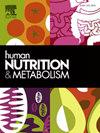The effect of liraglutide on metabolic and reproductive outcomes in infertile women with PCOS: A prospective cohort study
IF 1.8
Q3 ENDOCRINOLOGY & METABOLISM
引用次数: 0
Abstract
Objective
To prospectively evaluate the effects of the administration of liraglutide plus calorie deprivation, metformin plus calorie deprivation, or calorie deprivation alone on hirsutism, metabolic profile, and ovarian reserve in infertile patients with polycystic ovary syndrome (PCOS).
Patients and methods
This is a prospective observational study conducted on 80 insulin-resistant and infertile PCOS women. Enrolled patients received liraglutide (Saxenda®) + calorie deprivation (Group 1, n = 50), metformin + calorie deprivation (Group 2, n = 15), or calorie deprivation only (Group 3, n = 15). Endpoints were assessed in all patients before and after 120 days.
Results
At the end of treatment, BMI was significantly reduced in all groups, while the HOMA index decreased statistically significantly only in groups 1 and 2. Hormonal evaluation showed that serum SHBG and progesterone levels increased significantly in all three groups, while AMH levels significantly decreased in groups 1 and 3. Finally, the Ferriman-Gallwey score improved significantly in all groups. Percentage of decrease vs. baseline in BMI, HOMA index, AMH, Ferriman-Gallway score, and of increase in SHBG were higher in Group 1 than in Group 2 and Group 3. The percentage of increase in progesterone in Group 1 and Group 2 was higher than in Group 3.
Conclusion
The results support the use of liraglutide in insulin-resistant and infertile women with PCOS. The improvement in AMH and progesterone following liraglutide administration could be clinically useful in preparation for controlled ovarian hyperstimulation if patients with PCOS need to resort to an assisted reproductive technique.
利拉鲁肽对多囊卵巢综合征不孕妇女代谢和生殖结局的影响:一项前瞻性队列研究
目的前瞻性评价利拉鲁肽联合热量剥夺、二甲双胍联合热量剥夺或单独热量剥夺对多囊卵巢综合征(PCOS)不孕症患者多毛、代谢特征和卵巢储备的影响。患者和方法这是一项对80名胰岛素抵抗和不育的多囊卵巢综合征妇女进行的前瞻性观察研究。入组患者接受利拉鲁肽(Saxenda®)+热量剥夺(第1组,n = 50)、二甲双胍+热量剥夺(第2组,n = 15)或仅热量剥夺(第3组,n = 15)。在120天之前和之后评估所有患者的终点。结果治疗结束时,各组患者BMI均显著降低,HOMA指数仅在1、2组显著降低。激素评价结果显示,三组大鼠血清SHBG和孕酮水平均显著升高,而第1组和第3组AMH水平均显著降低。最后,各组Ferriman-Gallwey评分均有显著提高。组1患者BMI、HOMA指数、AMH、Ferriman-Gallway评分和SHBG较基线下降的百分比均高于组2和组3。1、2组孕酮升高百分率均高于3组。结论利拉鲁肽可用于胰岛素抵抗性不孕的PCOS患者。利拉鲁肽给药后AMH和黄体酮水平的改善可能在临床上有用,为PCOS患者需要求助于辅助生殖技术时控制卵巢过度刺激做准备。
本文章由计算机程序翻译,如有差异,请以英文原文为准。
求助全文
约1分钟内获得全文
求助全文
来源期刊

Human Nutrition and Metabolism
Agricultural and Biological Sciences-Food Science
CiteScore
1.50
自引率
0.00%
发文量
30
审稿时长
188 days
 求助内容:
求助内容: 应助结果提醒方式:
应助结果提醒方式:


